Abstract
Intensity fluctuation spectroscopy was used to detect particle motion within the pericardial organ of the crab Carcinus while it was perfused with media with increased potassium concentrations. Replacement of some or all of the sodium ions of the normal medium with potassium ions caused a graded increase in motion. Evidence is presented which indicates that this effect is not a consequence of membrane depolarization or calcium ion influx, but is due to the flux of potassium chloride and water into the cytoplasm of the cells.
Full text
PDF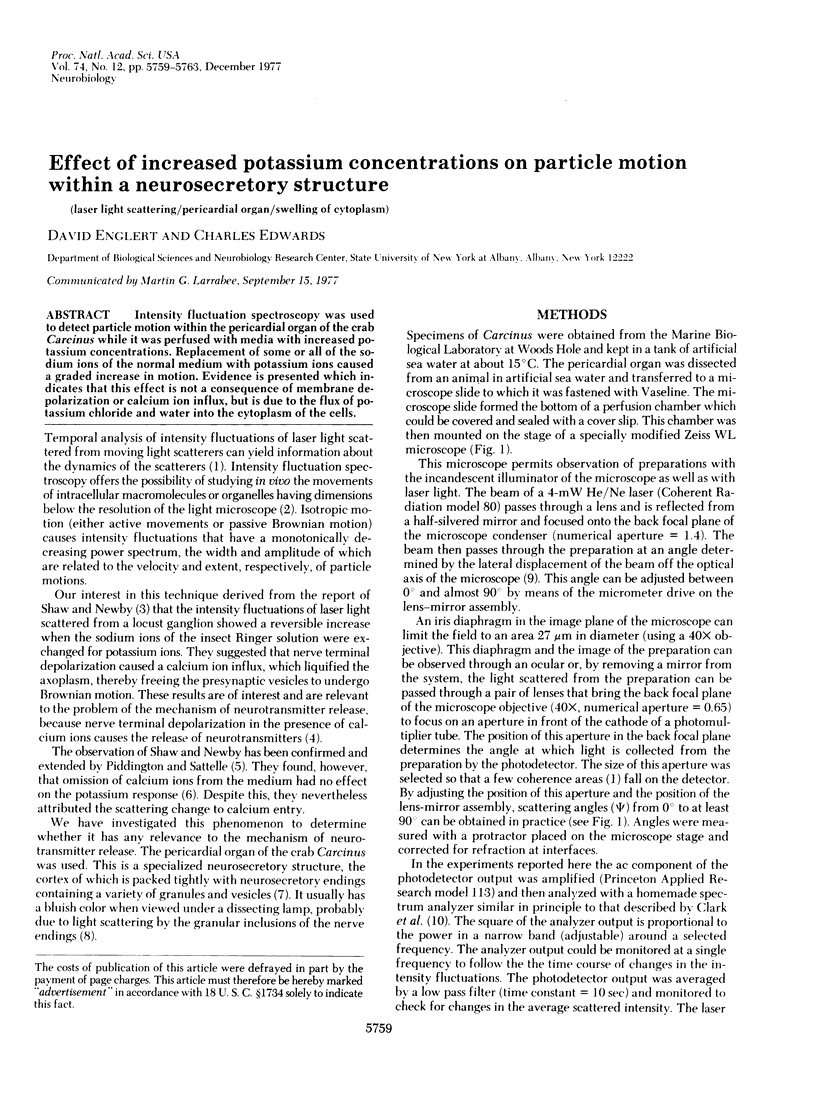
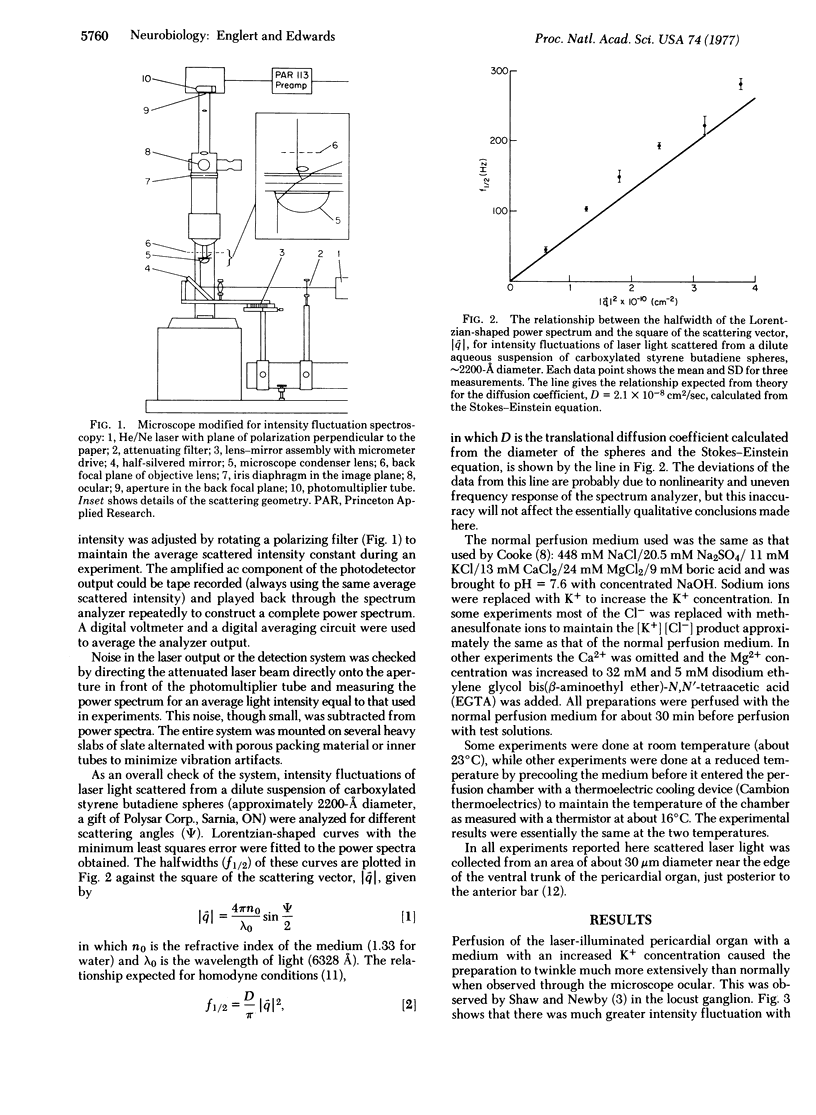
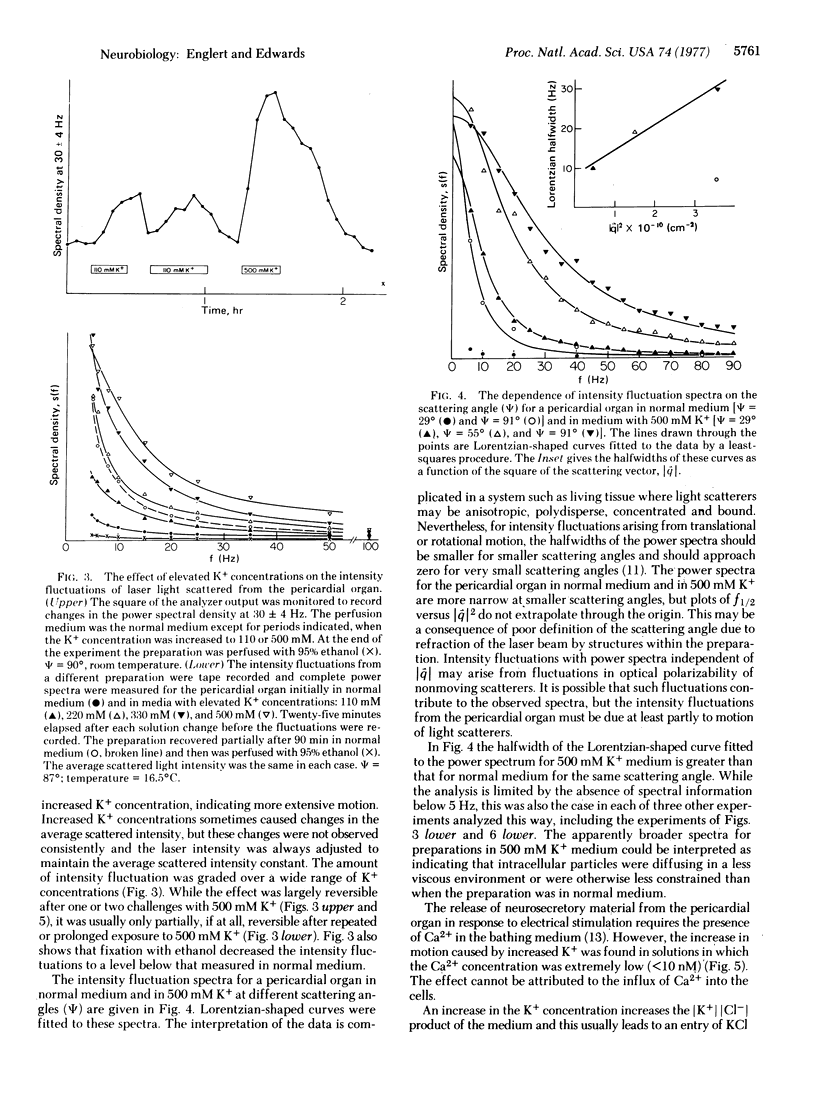
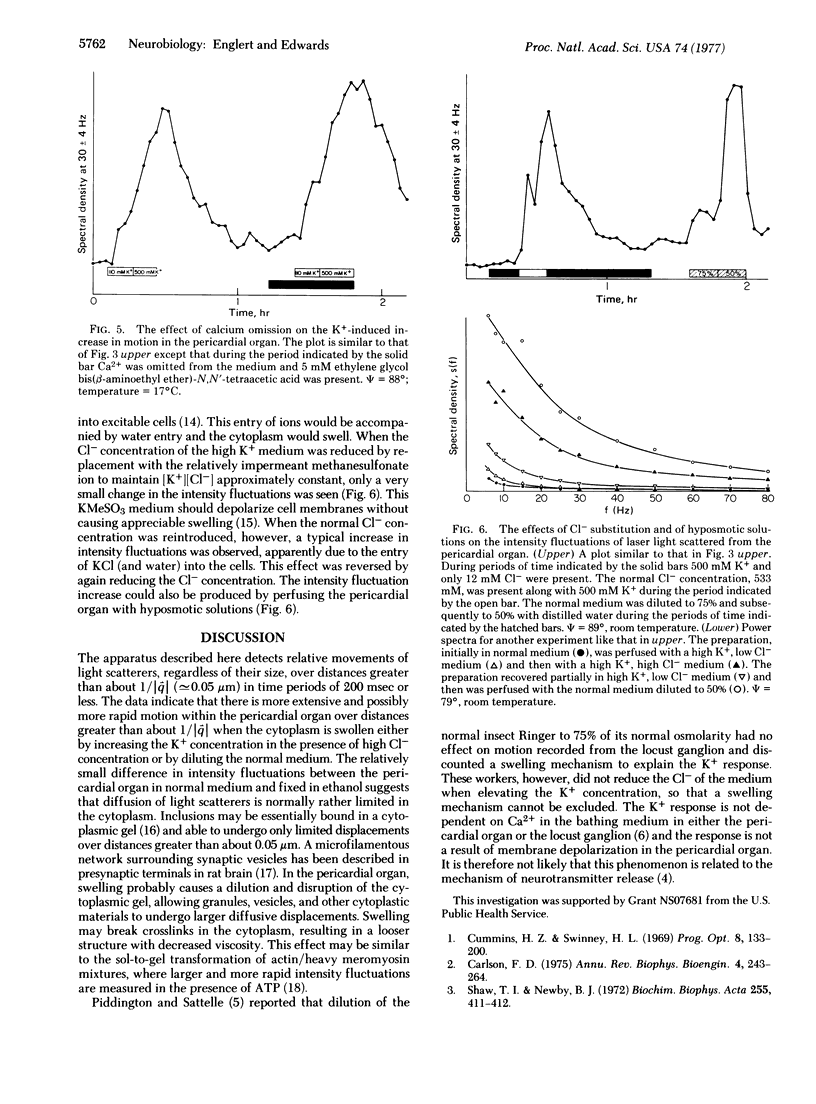
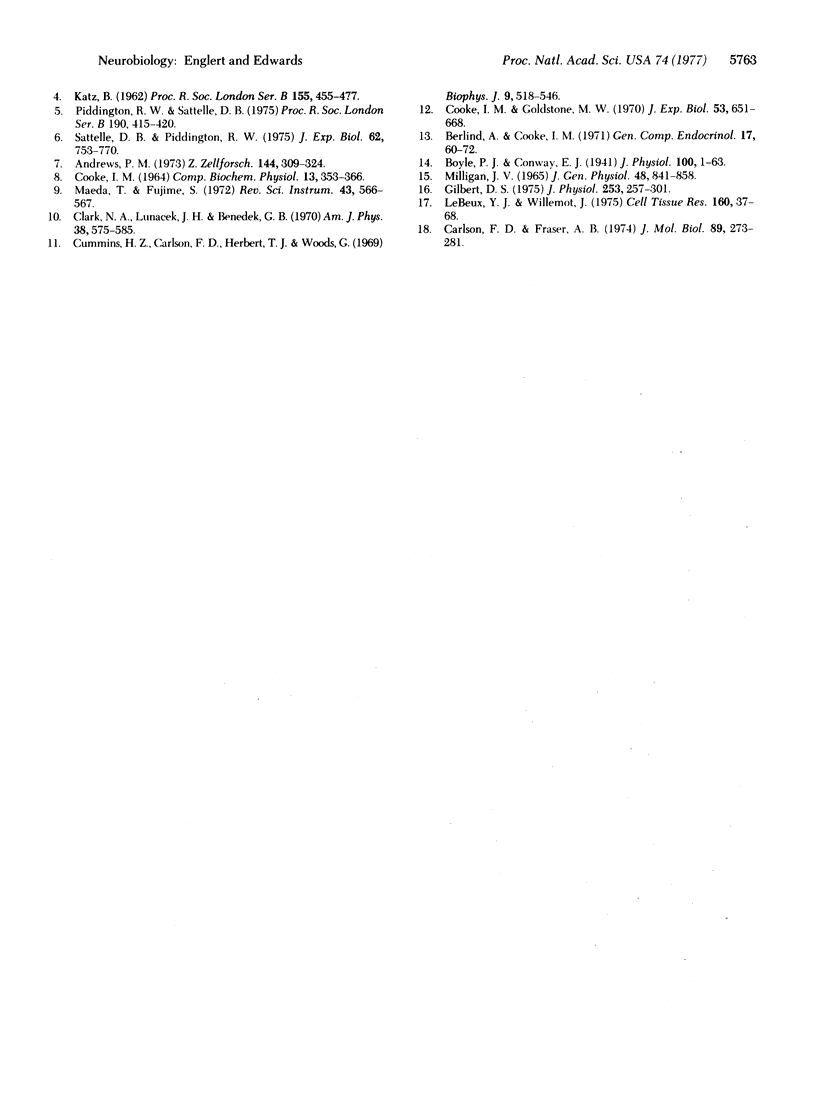
Selected References
These references are in PubMed. This may not be the complete list of references from this article.
- Andrews P. M. Ultrastructural study of the pericardial organ-anterior ramifications complex neurosecretory terminals. Z Zellforsch Mikrosk Anat. 1973 Nov 7;144(3):309–324. doi: 10.1007/BF00307579. [DOI] [PubMed] [Google Scholar]
- Berlind A., Cooke I. M. The role of divalent cations in electrically elicited release of a neurohormone from crab pericardial organs. Gen Comp Endocrinol. 1971 Aug;17(1):60–72. doi: 10.1016/0016-6480(71)90154-7. [DOI] [PubMed] [Google Scholar]
- Boyle P. J., Conway E. J. Potassium accumulation in muscle and associated changes. J Physiol. 1941 Aug 11;100(1):1–63. doi: 10.1113/jphysiol.1941.sp003922. [DOI] [PMC free article] [PubMed] [Google Scholar]
- COOKE I. M. ELECTRICAL ACTIVITY AND RELEASE OF NEUROSECRETORY MATERIAL IN CRAB PERICARDIAL ORGANS. Comp Biochem Physiol. 1964 Dec;13:353–366. doi: 10.1016/0010-406x(64)90029-5. [DOI] [PubMed] [Google Scholar]
- Carlson F. D., Fraser A. B. Dynamics of F-actin and F-actin complexes. J Mol Biol. 1974 Oct 25;89(2):273–281. doi: 10.1016/0022-2836(74)90518-x. [DOI] [PubMed] [Google Scholar]
- Carlson F. D. The application of intensity fluctuation spectroscopy to molecular biology. Annu Rev Biophys Bioeng. 1975;4(00):243–264. doi: 10.1146/annurev.bb.04.060175.001331. [DOI] [PubMed] [Google Scholar]
- Cooke I. M., Goldstone M. W. Fluorescence localization of monoamines in crab neurosecretory structures. J Exp Biol. 1970 Dec;53(3):651–668. doi: 10.1242/jeb.53.3.651. [DOI] [PubMed] [Google Scholar]
- Gilbert D. S. Axoplasm architecture and physical properties as seen in the Myxicola giant axon. J Physiol. 1975 Dec;253(1):257–301. doi: 10.1113/jphysiol.1975.sp011190. [DOI] [PMC free article] [PubMed] [Google Scholar]
- LeBeux Y. J., Willemot J. An ultrastructural study of the microfilaments in rat brain by means of E-PTA staining and heavy meromyosin labeling. II. The synapses. Cell Tissue Res. 1975 Jun 27;160(1):37–68. doi: 10.1007/BF00219841. [DOI] [PubMed] [Google Scholar]
- MILLIGAN J. V. THE TIME COURSE OF THE LOSS AND RECOVERY OF CONTRACTURE ABILITY IN FROG STRIATED MUSCLE FOLLOWING EXPOSURE TO CA-FREE SOLUTIONS. J Gen Physiol. 1965 May;48:841–858. doi: 10.1085/jgp.48.5.841. [DOI] [PMC free article] [PubMed] [Google Scholar]
- Piddington R. W., Sattelle D. B. Motion in nerve ganglia detected by light-beating spectroscopy. Proc R Soc Lond B Biol Sci. 1975 Sep 23;190(1101):415–420. doi: 10.1098/rspb.1975.0103. [DOI] [PubMed] [Google Scholar]
- Sattelle D. B., Piddington R. W. Potassium-induced motion increase in a central nervous ganglion. J Exp Biol. 1975 Jun;62(3):753–770. doi: 10.1242/jeb.62.3.753. [DOI] [PubMed] [Google Scholar]
- Shaw T. I., Newby B. J. Movement in a ganglion. Biochim Biophys Acta. 1972 Jan 17;255(1):411–412. doi: 10.1016/0005-2736(72)90042-9. [DOI] [PubMed] [Google Scholar]


